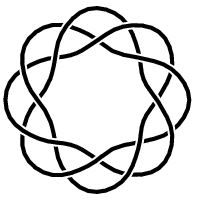 |
American Literature: Romanticism Sample Final Exam Essays 2015 final exam assignment Overall Learning Experience |
 |
Lori
Wheeler
Romanticism: The New Frontier
In multiple conversations with colleagues and peers during the course of
my studies in Romanticism this semester, I keep returning to the same question:
Did my undergraduate professors not focus on literary movements, or did I not
pay enough attention when they highlighted literary movements in my classes?
I have certainly read and discussed romantic texts and even discussed the
features of Romanticism within texts, but I have never had a firm understanding
of Romantic literature. For my part
this semester, I have journeyed into the world of literary movements and
discovered the unfamiliar terrain of Romantic literature as a whole.
My journey has been an interesting one through America’s literary history
to look at how American Romanticism developed out of and built into other
movements. A thorough study of literary movements would have prepared me to
think of each movement as part of some sort of evolution in literature where
each period retains the best of the period preceding it and contributing to the
development of the one that follows.
Unfortunately, I did not come to this metaphor until the end of the
semester, so I was compartmentalizing the characteristics of each period to in
order to place each text in its appropriate section of my understanding.
It seems that I was thinking of movements the same way that I understood
genres. I should have known better.
I believe this course in American Romanticism was well planned and the
syllabus well written to facilitate understanding not just of Romanticism in
America, but literary movements in general.
Because the readings for each class meeting included a combination of
fiction, essays, and poetry, the course design itself was a tool for piecing
together the puzzle of movements.
Through the syllabus, I could see that Romanticism crosses borders instead of
creating them as Kristine Vermillion highlights as well in her 2013 essay
“Contemplating Fathers.” It defies
strict categorization. This was
also shown in the progression of the course, from the establishment of the
American canon as separate from British tradition and the ideas that shaped
America’s version of the period to the remnants of Romanticism in the work of
today’s American writers. With the
help of the many resources on the course website, I was able to quickly identify
characteristics of the Romantic style.
Because I so easily identified with the connection between Romanticism and the
idea of America, I struggled to see beyond the American Dream narrative in the
texts and internalize the characteristics of Romanticism as separate from it.
As I explored in my midterm, I still think that Romanticism can be so
distinctly American, especially in our celebration of superheroes and origin
stories of the national mythology that began with Washington Irving and his
vision of New York’s Gotham. The
original notion of America is extremely Romantic, as can be seen in the work of
Cooper and Smith. Eventually, I
began to internalize Romanticism as a period in history and as a literary
movement through analysis and discussion of class texts.
I became very comfortable talking about Romanticism.
It was not until we started moving further through the syllabus, however,
that the instructor’s discussion questions and my own hiccups in understanding
started forcing me to think beyond the checklist I had in my mind for elements
of Romanticism.
Of course, I had always understood that a text could be considered to embody more than one literary movement, but I had never considered that the simultaneous appearance of multiple styles was more than an author imitating what was good in other works. It was not until the end of this semester that I realized the merging of movements was not simply a compilation of styles, but an evolution of them. I cannot comprehend why it took me so long to come to this point. I keep returning to the questions of my undergraduate experience. The answers do not matter, truthfully. It only matters that I have a better understanding of both Romanticism and literary movements in the greater sense. The learning I experienced this semester will serve me in the future as well as the teachers I will train and the students I will influence.
|
|
|
|

